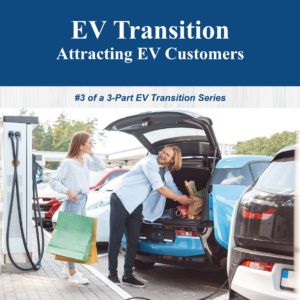
Insights
Payment Trends in Convenience and Fuel Retail
 An Interview Of Impact 21’S Gabe Olives – By The Wise Marketer
An Interview Of Impact 21’S Gabe Olives – By The Wise Marketer
The following article and interview with Gabe Olives, Chief Information Officer, Impact 21, courtesy of The Wise Marketer.
Delivering a consistent customer experience that delights customers and keeps them coming back is dependent not only on what people purchase but how they complete the purchase. In a high-frequency retail environment like Convenience and Fuel retail, the focus has traditionally been on product selection, availability, merchandising, and pricing. Retailers are now sharpening their focus on payments strategy in an effort to allow customers choice in using a preferred payment method, one that the consumer feels are secure and saves them time.
Making a purchase at a convenience store for gas or merchandise used to hinge on bank-issued credit and debit cards in addition to private label credit cards issued by the retailer or its branded fuel provider.
To get up to speed on current payment trends in convenience and fuel retail, we tracked down Gabe Olives, CIO at Impact 21, a retail consultancy with deep roots in the convenience sector. This interview with Gabe will open your eyes to the innovation in payments happening today and hint at what the future may hold for payments in convenience and fuel retail.
Q & A WITH GABE OLIVES
Wise Marketer (WM): What is influencing change in payments in convenience retail? What has changed since 2020?
Gabe Olives (GO): The newest payment options have been heavily influenced by consumer demand based on the events of the past two years. During the pandemic, retailers turned their attention to serving customers in touchless, sanitary, and time-saving ways.
The ability to enable online order for either pickup or delivery (mostly via third parties) became a priority for retailers. Other e-commerce trends adopted to meet consumer demand include Buy Online Pickup in Store (BOPIS) and Home Delivery (Retailer to Consumer directly).
WM: What specific payment methods do you see emerging in 2022?
GO: To me, the established payment formats gaining traction today include Mobile, Contactless, and wearables.
Contactless purchases are enabled using tools including 1D (bar code representation of your PAN) and 2D (QR codes). We are also beginning to see the use of 3D (holographic codes) at select retailers.
The proliferation of digital payment wallets is tied to the increased use of Mobile payments. Wallets allow the consumer to add multiple preferred payment types in one portable location. Choice is important to consumers and payment wallets allow choice in payment methods
Two others are worth mentioning, one familiar and one newer.
- With the rising fuel price environment, ACH payments (offering a method of payment discount) have gained momentum. Though this is not a new method of payment, it is one that has shown longevity and strength in today’s market.
- The entire genre of peer-to-peer payments is becoming more integral to store operations and should become more widely used in the near future.
WM: Of all these options, which are likely to see greater adoption and growth, and which might fade away?
GO: There’s really not an imposter in the group mentioned above, but clearly, some will emerge as easier to implement as well as more popular with customers. For any new method of payment to be sustainable and mainstream, there must be a widely adopted acceptance network of that payment type.
As an example, contactless payments have been in the market for over a decade but are just now becoming more frequently used by consumers. Part of this is because retailers are now enabling Near Field Communication (NFC) reader compatible with their Point-of-Sale (POS) equipment on a systemwide basis to allow EMV capable contactless card based or mobile initiated transactions.
It is not enough for retailers to prompt for usage of a payment method, they must ensure the capability is functioning properly and with similar reliability when compared to something like the tried-and-true magnetic stripe card.
WM: Many convenience store chains are accepting Electronic Benefits Transfer (EBT) food stamp payments. With a large unbanked population to serve, is this something others should be considering?
GO: With the increased traffic in C-stores driven by shifting consumer patterns, the acceptance of EBT should be seriously considered. This can be accomplished via stand-alone terminals or through integrations with a retailer’s card processor.
The integrated path is preferred to ensure program compliance and a more straightforward reconciliation. EBT functionality has been added by most payment processors. The integration requires POS/Payment server/BackOffice support to ensure compliance with program requirements which can vary by jurisdiction. As evidence of the trend, Instacart added EBT processing as part of its omni-channel platform model in early 2022.
WM: Cryptocurrencies are being used for payment in some convenience chains. Should this new option be taken seriously and should it be explored more deeply by retailers?
GO: Crypto remains more of a novelty in the c-store industry as opposed to a mainstream form of payment. That said, Sheetz is one big retailer that introduced the capability to accept crypto for payment in conjunction with Flexa and integrated it into their store technology in partnership with NCR in 2021. Other convenience operators have introduced ATMs capable of deposit and conversion of physical currency into cryptocurrencies.
Whether cryptocurrency enjoys wider adoption remains to be seen. The relatively high transaction fees which can vary based on the volume of transactions and longer timeframes for approvals don’t stack up well against established methods of payment in the industry. Transaction times need to be considered when partnering with providers to ensure transaction times are not increased, negatively impacting customer dwell times.
Step back from the question for a minute and realize that Crypto by design was created first as an investment vehicle rather than as a medium to complete transactions in a high frequency / low average ticket environment. The best way to illustrate this point is to ask, “does it make sense to bring a bar of gold to pay for a cup of coffee?”
WM: What are your thoughts on using Peer to Peer (P2P) payment schemes in convenience retail?
GO: Retailers need to evaluate and consider adding payment methods based on consumer demand. Peer-to-peer payments have grown in popularity over the past 5 years. The initial adoption by Millennials has spread to Gen X and post-Baby Boomers.
There are many competing P2P schemes in the market today including Paypal, Venmo, Zelle, Revolut, WePay, and WhatsApp. Retailers would be wise to create linkages to the plans with the highest volumes as a core group of options and then add others selectively as customers express interest. Giant Eagle did just that in 2021 when it became the first US grocery and convenience store chain to accept Paypal and Venmo in its stores.
WM: What other new payment options are on the horizon and should be watched in the future?
GO: Top of mind for me is Facial recognition, Holographic bar codes, and “just walk out” methods like Amazon One. Trends in consumer privacy and emerging data protection legislation will help determine which of these becomes mainstream.
Take Amazon Go as an example. It’s a palm-based payment system already in use at Amazon Go and Amazon Fresh. For consumers, it is easy to use once the enrollment process is completed.
Travel service Clear does not appear to be going after the payments space in convenience retail as they are more focused on travel, healthcare, and the ticketing market (concerts, sports). It would not be a surprise however to see facial recognition-based payments move into this sector in the future. They have entered the age verification space through pilot partnerships with sports venues.
WM: How should convenience and fuel retailers assess these payment trends and decide which payment options to adopt?
GO: Listening to customers is always a good place to start. Gauging customer demand is more important over the long term than making a decision to implement a new payment method based on economics alone.
Remember that “Convenience Stores” are meant to be convenient. They earned that name for a reason. Payment methods should always enhance the convenient and time-saving nature of a retail visit, not create slower lines by offering too much choice.
Even though the retailer may save a bit of money on merchant fees, if the new method creates a speed bump for processing long lines or is simply not in demand from customers, then maybe it is not worth the investment.
Retailers should also keep an eye on adjacent areas of retail. Consumers tend to build expectations that their favorite aspects of the shopping experience should be adopted by all the retailers they frequent. You could call this the “Amazon effect” as the choice, speed of delivery, and related services that are bundled in Amazon have created an expectation of “retail best practice” for many consumers.
That might not sound fair, but we have to do our best to recognize the needs and desires of our customers.
Related Insights
How Seamless is Your Customer Journey?
A seamless customer journey starts with an honest assessment of your operations. Most retailers know they need to create value […]
Why You Need An Automation Journey Map
Investment isn’t enough. To maximize the potential of retail automation technology, companies need a deliberate approach. Most of the business […]
Turn Your Customer-First Mantra Into Strategic Action
Retailers have been saying it for years, “We need to put the customer at the center of everything we do.” […]
Rethinking Your Offer to Attract EV Customers
With electric vehicle adoption accelerating faster than expected, convenience retailers need to begin thinking through their EV strategies sooner rather […]
Want to stay in touch? Subscribe to the Newsletter



 An Interview Of Impact 21’S Gabe Olives – By
An Interview Of Impact 21’S Gabe Olives – By 


